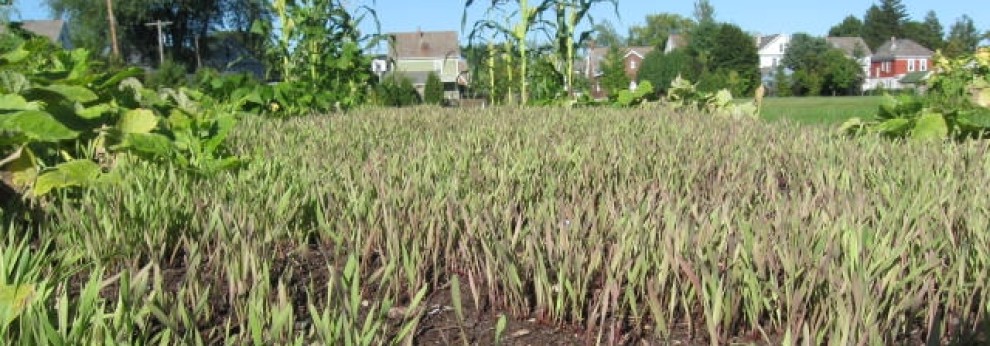Mother Nature and the school calendar present a couple of challenges to school gardeners in this part of the world. Conventional wisdom, for example, says do not put tomatoes in the soil around here until late May because a late frost, which would kill the tender plants, still is possible until then. But students would miss most of the action if we wait that long, because late May is just a couple of weeks before summer vacation at school. And of course the next season’s first frost sometimes arrives soon after students return to classes in September. So students might not see much then either.
Step into our 160-square-foot unheated greenhouse, however, or peek into one of our similarly unheated small hoop houses – unheated, that is, except when the sun is shining – and the growing season isn’t nearly so confining or so out of synch with school’s rhythms. In fact, with a variety of simple structures, we are still taking care of a host of greens that tolerate the cold. We don’t expect to see a lot of growth between now and late February. Mild days over the weekend, however, permitted a look. Lo and behold, even after recent subzero temperatures, spinach, lettuce and mache sown in mid-October were bigger than last time we checked. And as Crem Dias’ accompanying photos show, they even looked quite healthy.
We still have plenty to learn about inexpensive construction that is sturdy enough to manage, about plants that can stand the cold and about timing the start of cool-weather plants. It is worth noting, however, and maybe even with some satisfaction, that we are on our way to year-round growing and growing throughout the school year.
—Bill Stoneman






